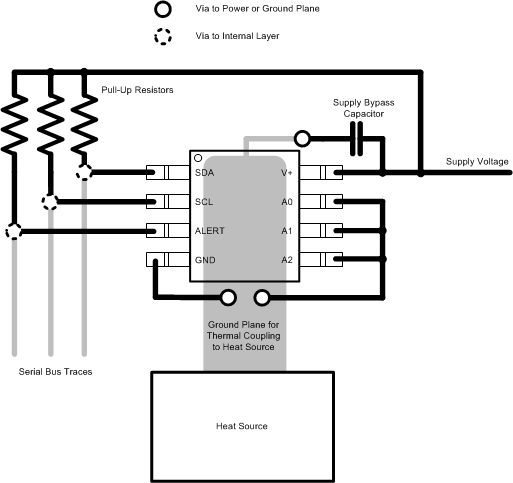ZHCSEG0B November 2015 – April 2017 TMP275-Q1
PRODUCTION DATA.
- 1 特性
- 2 应用
- 3 说明
- 4 修订历史记录
- 5 Pin Configuration and Functions
- 6 Specifications
- 7 Detailed Description
- 8 Application and Implementation
- 9 Power Supply Recommendations
- 10Layout
- 11器件和文档支持
- 12机械、封装和可订购信息
10 Layout
10.1 Layout Guidelines
Mount the TMP275-Q1 to a PCB as shown in Figure 17. For this example the A0, A1, and A2 address pins are connected directly to ground. Connecting these pins to ground configures the device for slave address 1001000b.
- Bypass the V+ pin to ground with a low-ESR ceramic bypass capacitor. The typical recommended bypass capacitance is a 0.1-μF ceramic capacitor with a X5R or X7R dielectric. The optimum placement is closest to the V+ and GND pins of the device. Take care in minimizing the loop area formed by the bypass-capacitor connection, the V+ pin, and the GND pin of the device. Additional bypass capacitance can be added to compensate for noisy or high-impedance power supplies.
- Pull up the open-drain output pins SDA, SCL, and ALERT through 5-kΩ pullup resistors.
10.2 Layout Example
 Figure 17. TMP275-Q1 Layout Example
Figure 17. TMP275-Q1 Layout Example